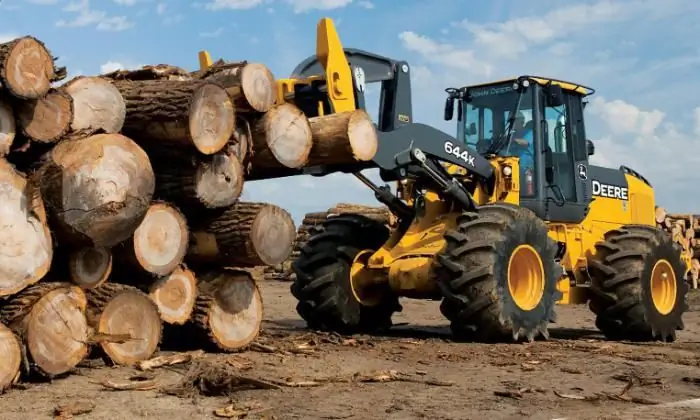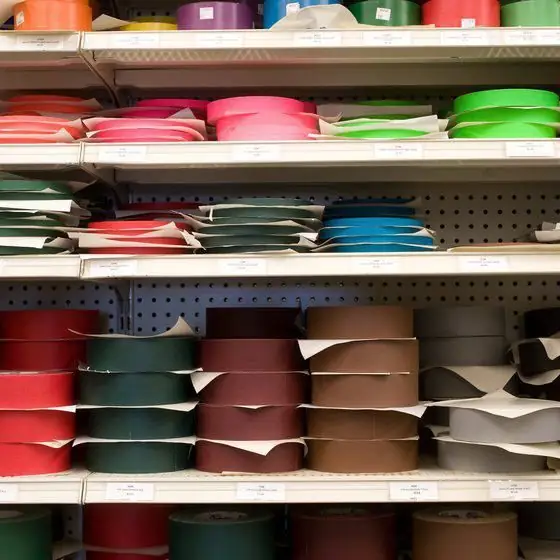2025 Author: Howard Calhoun | [email protected]. Last modified: 2025-06-01 07:12:56
Most of all existing enterprises cannot do without inventories in their activities, which are used to produce products, provide services or perform work. Since inventories are the most liquid assets of the enterprise, their correct accounting is extremely important.
Liquidity is the ability of things to turn into money. Inventory takes one of the first places in the list of such things, since it is due to the inventory that the company makes a profit.
This article will consider general information about the inventory, accounting entries - materials released into production, for other needs, disposal and sale of inventory.

What is an MPZ?
Before proceeding to the description of the postings - materials are released into production and other postings, let's analyze some concepts.
IPZ recognizes the assets involved in the main activities of the enterprise. MPZs are defined according to three criteria: their use inproduction cycle, directly for sale and for other needs of the organization. In other words, MPZ are the materials used in the enterprise. Since inventories are current assets, another important criterion for determining inventories is the period of their use, which must be shorter than 12 months or one production cycle.

In addition to the inventories, a common term is also inventory. Many are interested in the difference between these concepts. In fact, there is no difference between them, and in different sources both MPZ and TMC mean the same thing. Prior to the entry into force of PBU 5/01, the term goods and materials was more often used to designate reserves.
Admission and Evaluation of Inventory
Receipt of materials can be made through the purchase or creation of their own funds of the company. Upon receipt of mat-in, the relevant accompanying documents and a receipt order (not to be confused with a cash receipt order) are drawn up, which should contain all the basic information about goods and materials. Accounting and storage methods can also be used. These include the batch method and the varietal method. Inventories can be used for the purposes of production (on account 20) or their further sale. When writing off goods and materials, their assessment should be made. There are three options for assessing inventories when writing off: at the unit price, at the average price, or at the price of the first at the time of purchase (FIFO).

Expense (vacation) MPZ
Consumption of mat-in means their issuance from warehouses for furtheruse in the production cycle or for the needs of the company. Most often, an entry for the consumption of goods and materials is made under the debit of account 20. The movement of goods and materials within the enterprise itself from one warehouse to another or for construction on the territory of the enterprise is regarded as an internal movement of the inventory. Documentation of these business transactions involves the use of the following documents: invoice for internal movement, limit-fence card M-8, requirement-invoice M-11 and invoice M-15. They are indicated in brackets after the description of the business transaction.

Postings - materials released for production and for other purposes
- Dbt 20 Cdt 10 - material consumption in the main. production (M-8, M-11, M-15).
- Dbt 23 Kdt 10 - to auxiliary production (M-8, M-11, M-15).
- Dbt 25 Kdt 10 - for general purposes (M-8, M-11, M-15).
- Dbt 26 Kdt 10 - for general economic purposes (M-8, M-11, M-15).
- Dbt 10 Kdt 10 - internal movement of goods and materials (invoice for internal movement).
Other inventory disposals
In addition to the usual consumption of materials, there are other disposals of goods and materials. Other disposals include write-offs of inventories and their donation. The write-off occurs in three cases: the arrival of goods and materials into disrepair, aging (moral), the detection of a shortage or theft of inventory and their damage (due to force majeure, too). Obsolescence is understood as a decrease in the liquidity of the inventory, due to the appearance on the market of new improved analogues.
Decommissioning of mat-in is carried out according to the decision of a specially created for thiscommission, in which persons financially responsible for goods and materials must be present. The MPZ is inspected and an act of disposal is prepared. The donation of materials should take place through primary documents for the consumption of goods and materials - invoices, applications for expenses to the side, and others. At the same time, the fact of donation is taxed, as well as the usual sale of MPZ for money. Other accounting for the disposal of materials is carried out using the following documents: act of writing off mat-in (hereinafter ASM), accounting statement-calculation (hereinafter BSR), invoice (hereinafter SF), cash receipt order (hereinafter PKO), invoice M-15, form KO-1, sales book.

Unlike the previous entries (materials released for production and for other purposes), there are much more entries for the disposal of goods and materials.
Inventory disposal transactions
- Dbt 94 Kdt 10 - write-off in case of damage (ASM).
- Dbt 20 Cdt 94 - write-off in case of damage within the limits of natural loss for the costs of the main. pr-va (BSR, ACM).
- Dbt 23 Kdt 94 - write-off in case of damage within the boundaries of eat. kill for support costs pr-in (BSR, ACM).
- Dbt 25 Kdt 94 - write-off in case of damage within the boundaries of eat. kill for general government expenses (BSR, ASM).
- Dbt 26 Kdt 94 - write-off in case of damage within the boundaries of eat. kill for general household expenses (BSR, ASM).
- Dbt 29 Kdt 94 - write-off in case of damage within the boundaries of eat. kill for the costs of serving pr-in (BSR, ACM).
- Dbt 73.2 Kdt 94 - write-off in case of damage beyond the borders eats. kill on the perpetrators, if they are found (BSR, ACM).
- Dbt 91.2 Kdt 68.2 - VAT recovery onspoilage beyond the borders eats. kill (BSR, SF).
- Dbt 50 Kdt 73.2 - repayment by the culprit of the debt for cash damage (PKO, KO-1).
- Dbt 70 Kdt 73.2 - repayment by the culprit of debt for damage from wages (BSR).
- Dbt 91.2 Kdt 94 - write-off in case of damage beyond the borders eats. kill if it is impossible to find the perpetrators, or if the court refused to recover money from the perpetrators (BSR, ACM).
- Dbt 99 Kdt 10 - write-off in case of natural disasters (ASM).
- Dbt 99 Kdt 68.2 - VAT recovery, if it has already been claimed for deduction, on the loss of MPZ from natural disasters (BSR, SF).
- Dbt 91.2 Kdt 10 - disposal as a gift (M-15, SF).
- Dbt 91.2 Kdt 68.2 - VAT on disposal as a gift (M-15, SF, sales book).
Sale of refineries
The sale of mat-in is carried out at the amount agreed between the seller and the buyer. The accrual and payment of taxes on the sale of mat-in is regulated by law. When selling an MPZ, an invoice for the consumption of mat-in to the side must be issued, an agreement and an SF must be drawn up. If materials are transported through a third party, a waybill must be issued. Documents for transactions related to the sale of inventories: invoice M-15, invoice, bank statement (hereinafter referred to as BV), payment order (hereinafter referred to as PP), accounting statement-calculation, sales book, purchase book.

Transactions for the sale of inventories
- Dbt 91.2 Kdt 10 - disposal upon sale after unloading or prepayment. The value (amount) of the posting is reflected based on the selected option for assessing the inventory - at the unit price, ataverage cost or FIFO (M-15).
- Dbt 62 Kdt 90.1 - proceeds from the sale together with VAT after unloading (M-15, SF).
- Dbt 91.2 Kdt 68.2 - VAT on sales (M-15, SF, sales book).
- Dbt 51 Kdt 62 - buyer's payment after unloading or prepayment (BV, PP).
- Dbt 76 Kdt 68.2 - VAT on prepayment (PP, SF, sales book).
- Dbt 62 Kdt 91.1 - proceeds from the sale together with VAT on prepayment (M-15, SF).
- Dbt 62 Kdt 62 - prepayment to pay off the buyer's debt (BSR).
- Dbt 68.2 Kdt 76 - VAT on the repaid prepayment (SF, purchase book).
On this list of transactions (materials released for production and for other purposes, transactions for the disposal and sale of inventories) can be completed. We hope you found this article helpful.
Recommended:
Accounting documents are The concept, rules for registration and storage of accounting documents. 402-FZ "On Accounting". Article 9. Primary accounting documents

Proper execution of accounting documentation is very important for the process of generating accounting information and determining tax liabilities. Therefore, it is necessary to treat documents with special care. Specialists of accounting services, representatives of small businesses who keep independent records should know the main requirements for the creation, design, movement, storage of papers
Determining the financial result: accounting procedure, accounting entries

Each organization carefully monitors such an indicator as the financial result. Based on its analysis, it is possible to draw a conclusion about the effectiveness of the organization. The definition of the financial result is carried out according to a certain methodology. The procedure for accounting for income and profit, accounting entries will be discussed in the article
Posting to fixed assets. Basic accounting entries for fixed assets

The non-current assets of an enterprise play an important role in the production cycle, they are associated with logistics processes, trade, provision of services and many types of work. This type of assets allows the organization to earn income, but for this it is necessary to carefully analyze the composition, structure, cost of each object. Constant monitoring is carried out on the basis of accounting data, which must be reliable. Basic postings on fixed assets are typical
Replenishment of working capital: sources, accounting, accounting entries

Quite often in the process of doing business, there are moments when the company begins to urgently need additional money. In this case, the company's management can borrow money from a credit institution or use a commodity loan. To what extent is the replenishment of working capital in this way beneficial for the enterprise, and what other options are there for stabilizing the difficult economic situation of the company?
Accounting for working hours in the summary accounting. Summarized accounting of the working time of drivers with a shift schedule. Overtime hours with summarized accounting of wor

The Labor Code provides for work with a summarized accounting of working hours. In practice, not all enterprises use this assumption. As a rule, this is due to certain difficulties in the calculation

